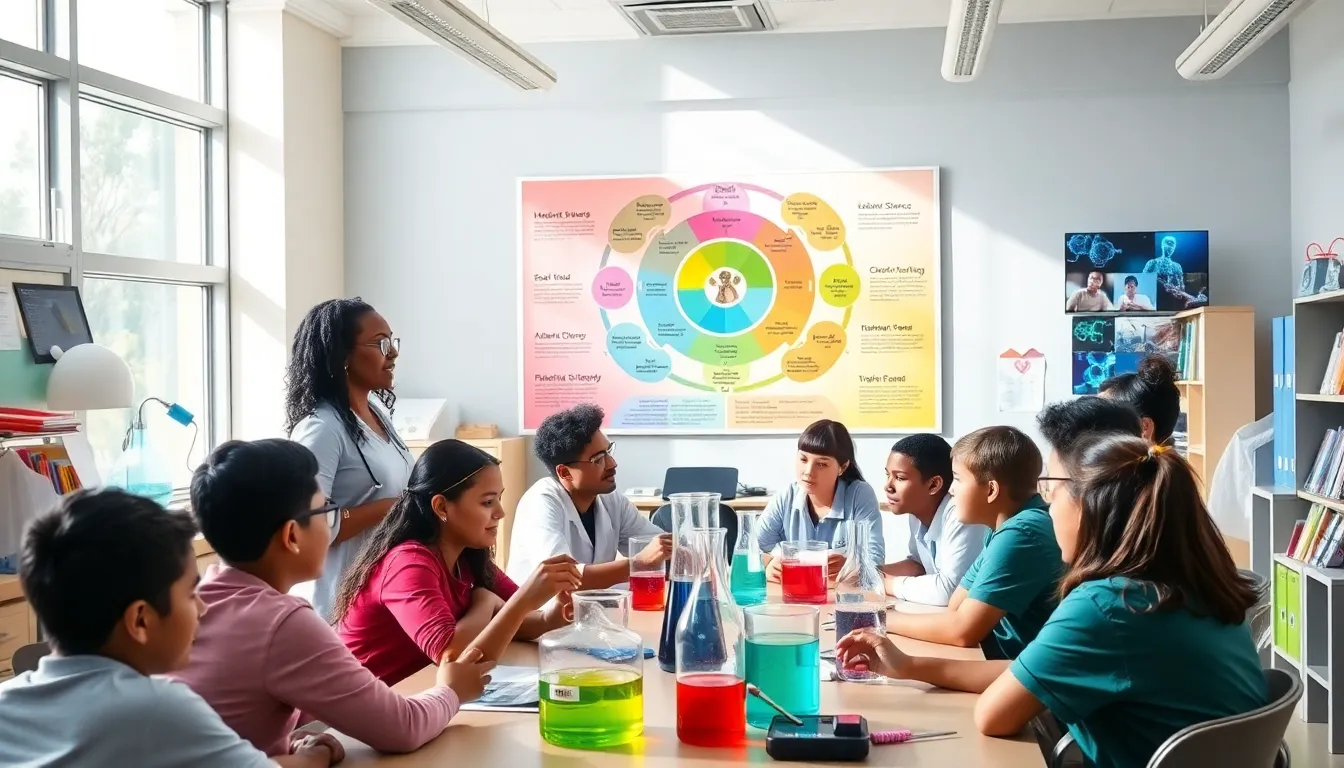In an era defined by rapid technological advancement and interdisciplinary knowledge, integrated science education is emerging as a vital approach in the realm of academia. This method encourages students to blend concepts from various scientific disciplines, fostering a more holistic understanding of the world around them. One such platform paving the way for integrated science education is Redwebzine. By leveraging innovative technologies and interactive teaching methods, it encapsulates the essence of modern educational practices. This article will investigate into the nature of integrated science education and elucidate how Redwebzine can enhance this innovative pedagogical approach.
Table of Contents
ToggleUnderstanding Integrated Science Education

Integrated science education refers to a curriculum approach that merges distinct scientific disciplines, such as biology, chemistry, physics, and environmental science, into a cohesive learning model. Rather than teaching these subjects in isolation, integrated science promotes the exploration of interconnected themes and real-world applications. This model encourages critical thinking and problem-solving, effectively preparing students for complex challenges in life and future careers.
Also, this type of education emphasizes inquiry-based learning, where students engage in investigations, experiments, and discussions that lead to a deeper understanding of scientific principles and their relevance. By establishing connections among disciplines, students learn to appreciate how concepts from one area can influence and enhance understanding in another.
Benefits of Integrated Science Curriculum
Implementing an integrated science curriculum offers numerous benefits for students and educators alike. Here are key advantages that this approach provides:
- Holistic Understanding: Students develop a more comprehensive understanding of science by seeing the relationships among different disciplines.
- Enhanced Critical Thinking: Integrated science challenges students to analyze scenarios, ask questions, and think critically across various contexts.
- Improved Engagement: By relating scientific concepts to real-world issues, students are more likely to stay engaged in their learning.
- Preparation for Future Careers: With a curriculum that mirrors the interdisciplinary nature of modern science, students are better prepared for careers that demand collaboration and adaptability.
- Development of Skills: Students hone essential skills such as communication, teamwork, and analytical reasoning through collaborative projects and discussions.
In essence, an integrated science curriculum not only enriches students’ academic experiences but also equips them with lifelong skills.
Redwebzine: A Platform for Science Education
Redwebzine stands out as a transformative platform dedicated to advancing integrated science education. This online resource provides a wealth of multimedia content designed to enhance classroom learning.
Key Features of Redwebzine’s Approach
Redwebzine offers a range of dynamic features, including access to interactive articles, video resources, and up-to-date scientific research. These materials are curated to resonate with the different learning styles of students, ensuring that engagement remains high.
Innovative Teaching Methods
The platform employs innovative teaching methods that transcend traditional lecture-based instruction. By incorporating project-based learning and collaborative assignments, Redwebzine fosters a more interactive educational environment. This encourages students to work together, share ideas, and apply their knowledge to solve real-world problems.
Engagement and Interactivity
Redwebzine prioritizes student engagement through interactive modules and gamified learning experiences. Such methods not only stimulate curiosity but also promote active participation, making learning enjoyable and memorable.
Integration of Technology in Education
Technology plays a crucial role in the evolution of integrated science education. With digital tools becoming increasingly prevalent, educators can use various platforms to enhance their teaching methods.
- Online Resources: The availability of diverse online resources allows educators to curate materials that align with their curriculum.
- Virtual Labs: Technology enables students to conduct virtual experiments, providing safe and cost-effective opportunities to explore scientific concepts.
- Data Analysis Tools: Students can use software applications to analyze data, fostering skills in quantitative reasoning and interpretation.
- Collaborative Platforms: Tools such as discussion forums and project management software promote collaboration among students, regardless of geographical barriers.
Eventually, technology enhances the integrated science curriculum by making learning experiences more accessible, engaging, and relevant.
Challenges and Considerations
Even though its advantages, implementing integrated science education is not without challenges. Educators may face several hurdles, including:
- Curricular Overlap: Balancing the different disciplines can sometimes lead to content overlap, making it challenging to create a streamlined curriculum.
- Assessment Issues: Traditional assessment methods may not adequately evaluate a student’s understanding of integrated concepts, necessitating the development of new evaluation tools.
- Teacher Training: Educators may require additional training to adapt to integrated teaching methodologies, highlighting the need for professional development.
- Resource Availability: Ensuring access to high-quality resources like those provided by Redwebzine can be a barrier for some institutions, impacting implementation.
Addressing these challenges requires collaborative efforts among educators, administrators, and technology providers to ensure the successful rollout of an integrated science curriculum.
Future of Integrated Science Education
The future of integrated science education looks promising, particularly with the continued emergence of new technologies and educational practices. Trends suggest a growing emphasis on interdisciplinary learning and its importance in the modern educational landscape.
- Increased Collaboration: As educational institutions recognize the value of integrated science, greater collaboration among science disciplines is likely to foster more comprehensive curricula.
- Rise of Personalized Learning: Technology is paving the way for personalized learning experiences, allowing students to progress at their own pace while engaging with integrated science concepts.
- Global Connectivity: As online resources and platforms like Redwebzine become more widespread, global collaboration among students and educators will enhance the sharing of knowledge and best practices.
- Focus on Sustainability: Given the pressing issues related to climate change and resource management, integrated science education will become increasingly focused on sustainability and environmental sciences.
To conclude, the integration of various scientific disciplines is not just a trend, but a necessary evolution in education that prepares future generations for the complexities of the world.
Conclusion
Integrated science education represents a pivotal approach to learning that aligns with the interconnectivity of modern scientific inquiry. Redwebzine serves as a valuable resource in this arena, offering dynamic content and innovative teaching methodologies that can enhance the educational experience.
While challenges exist in implementing such curricula, the benefits are substantial, preparing students for future challenges. As technology continues to advance, the future of integrated science education will open up new frontiers of learning, collaboration, and discovery.






